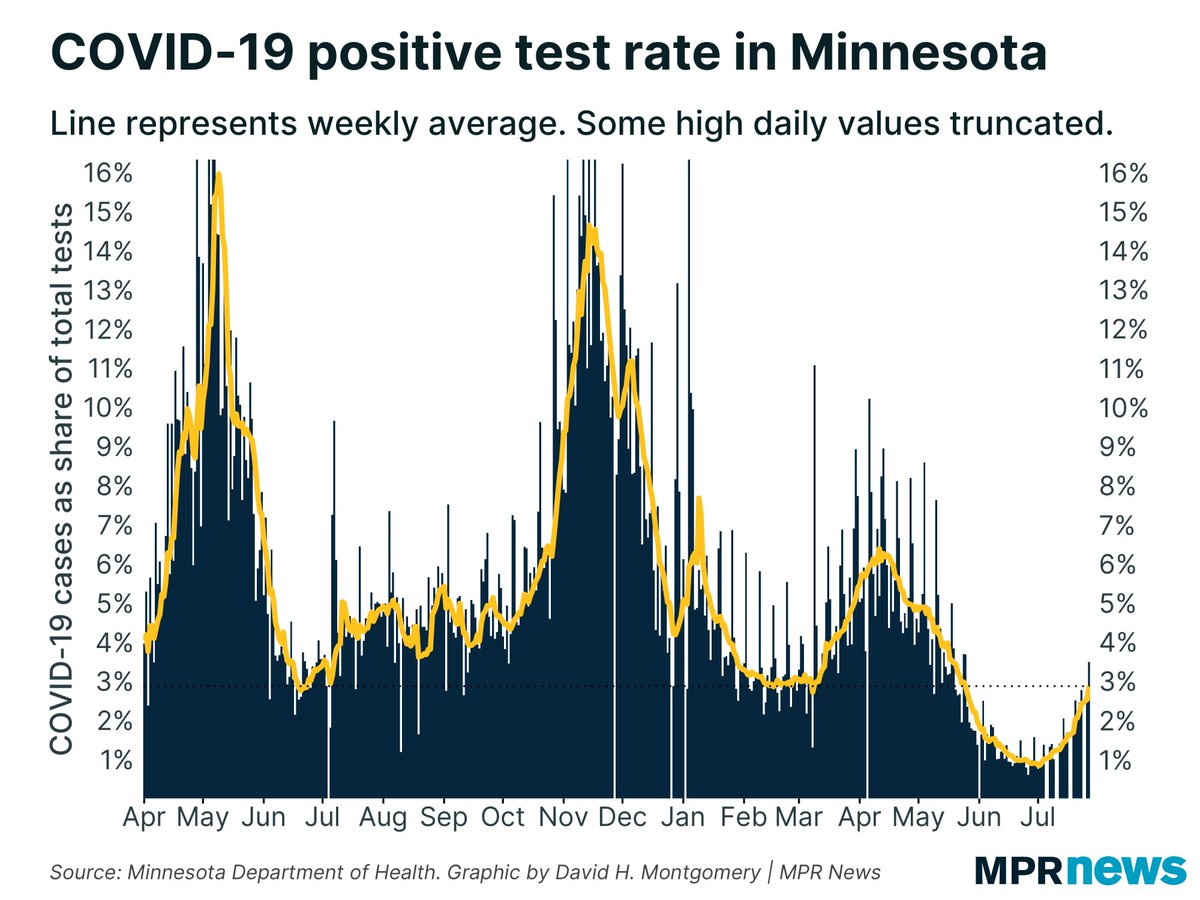
Minnesota’s #COVID19 outbreak continues to grow, up to an average of nearly 700 confirmed cases per day, and a 4.2% positivity rate. 

Here’s how the Summer 2021 compares to past waves in terms of positivity rate. If — IF — this wave takes more than 6 weeks to peak, we’ve got a decent chance of surpassing the Spring 2021 wave. 

Every day someone replies two or three tweets in to my daily thread asking if I’m going to share some basic stat that I share almost every day.
PATIENCE PEOPLE. The graphs will come!
PATIENCE PEOPLE. The graphs will come!
https://twitter.com/pommier78/status/1423318572584013824
• • •
Missing some Tweet in this thread? You can try to
force a refresh

















